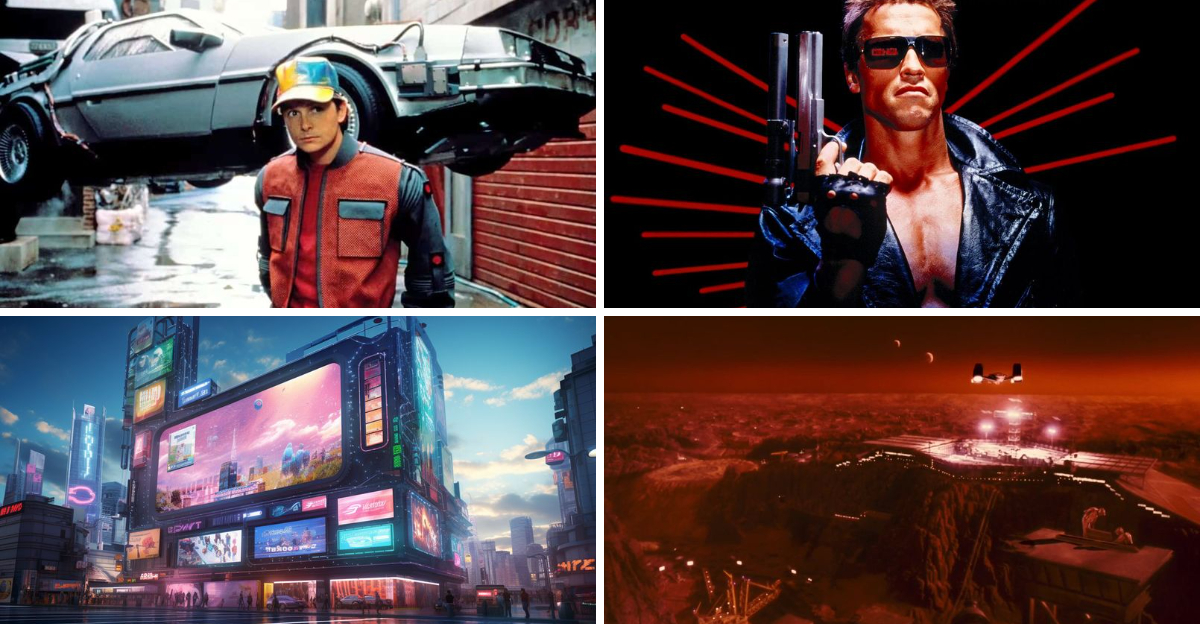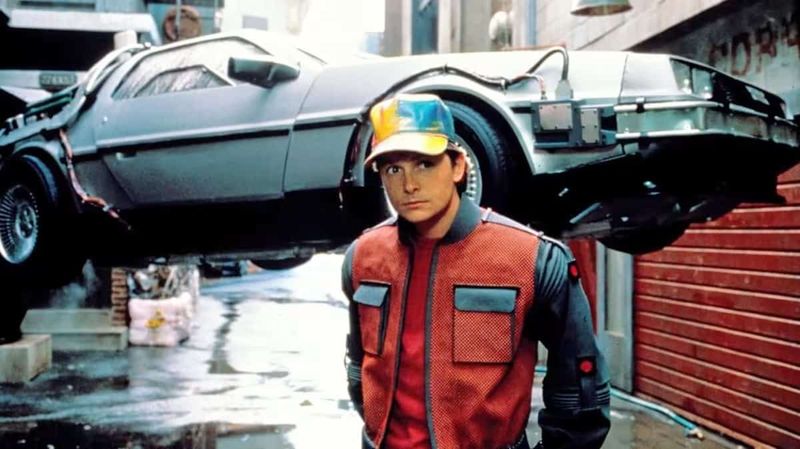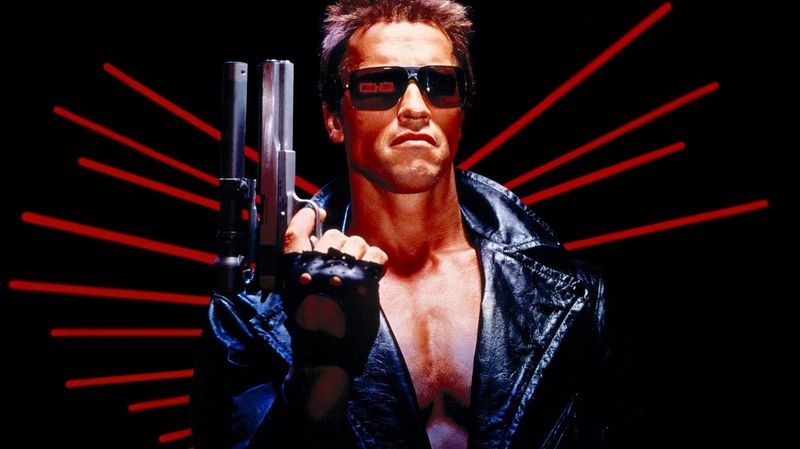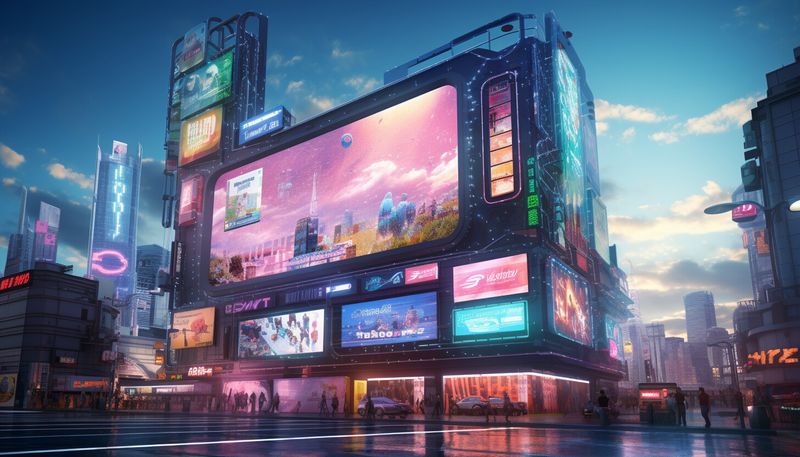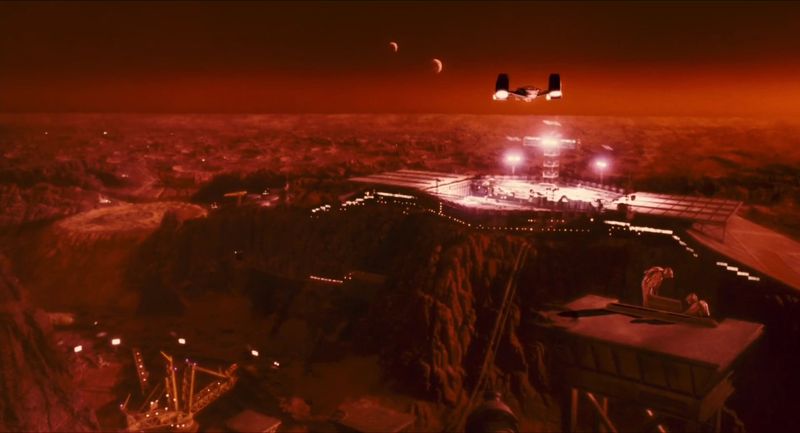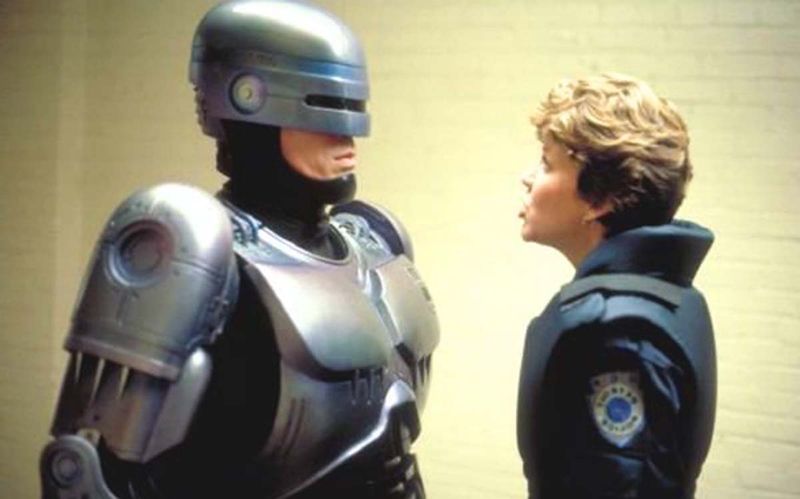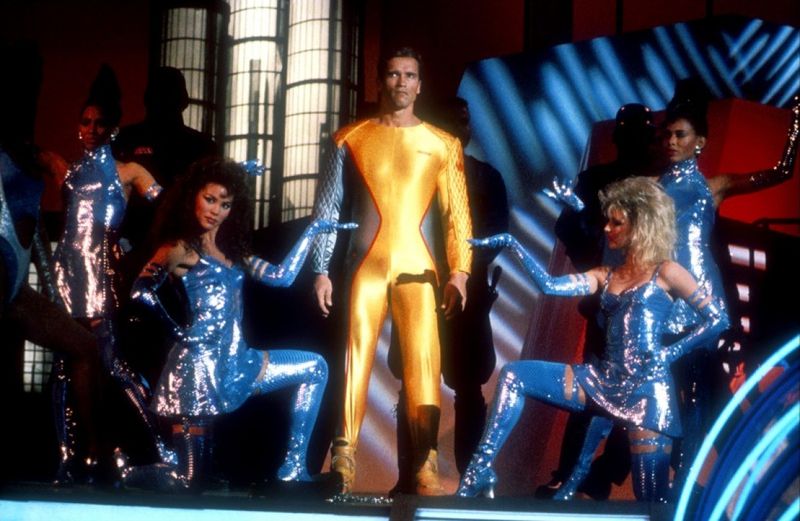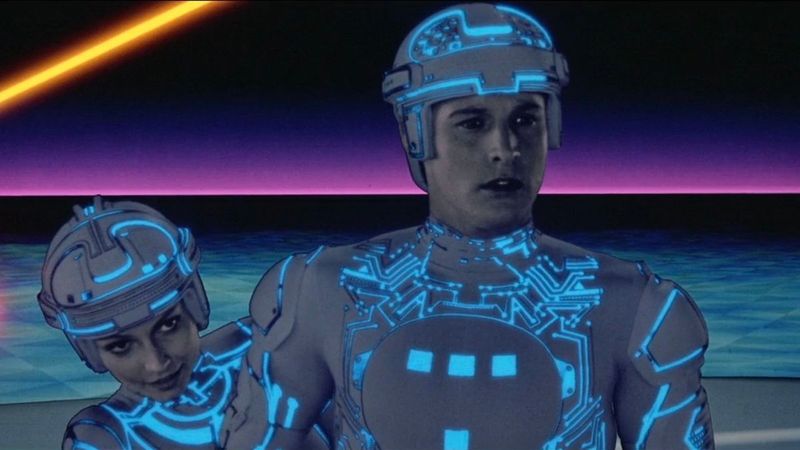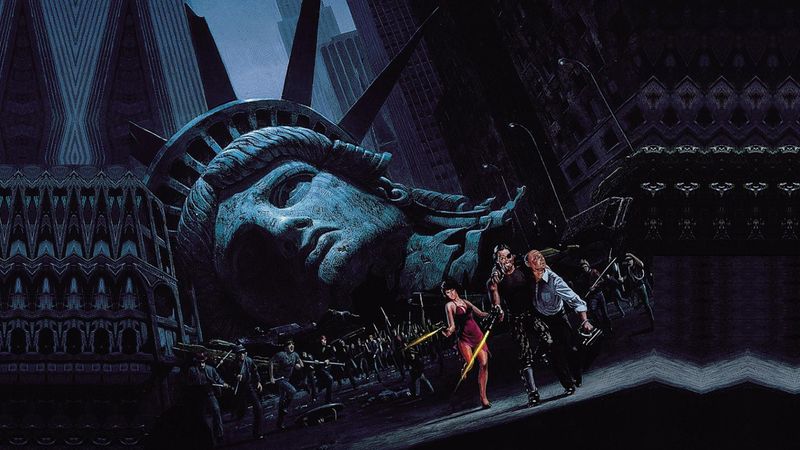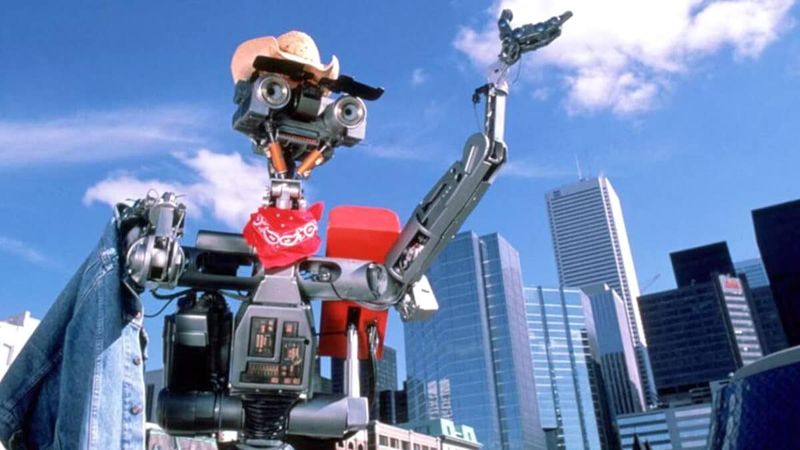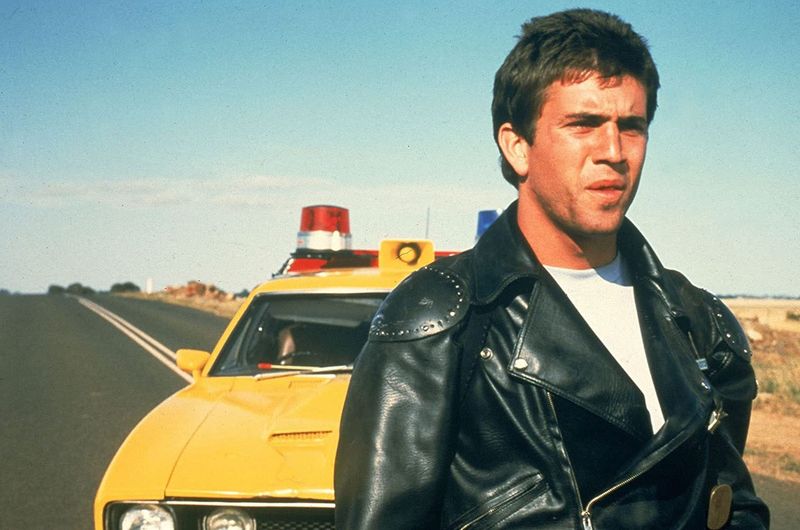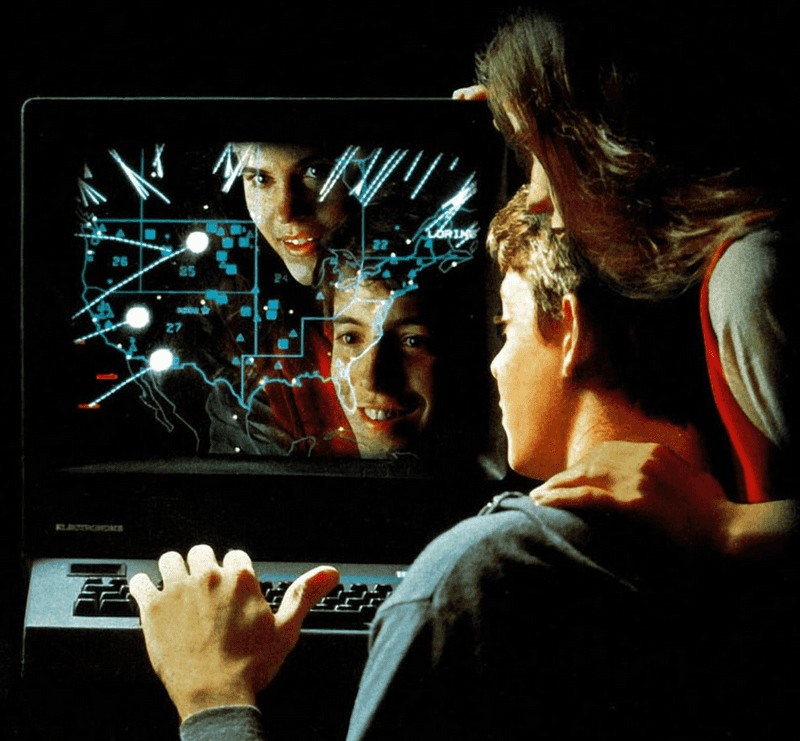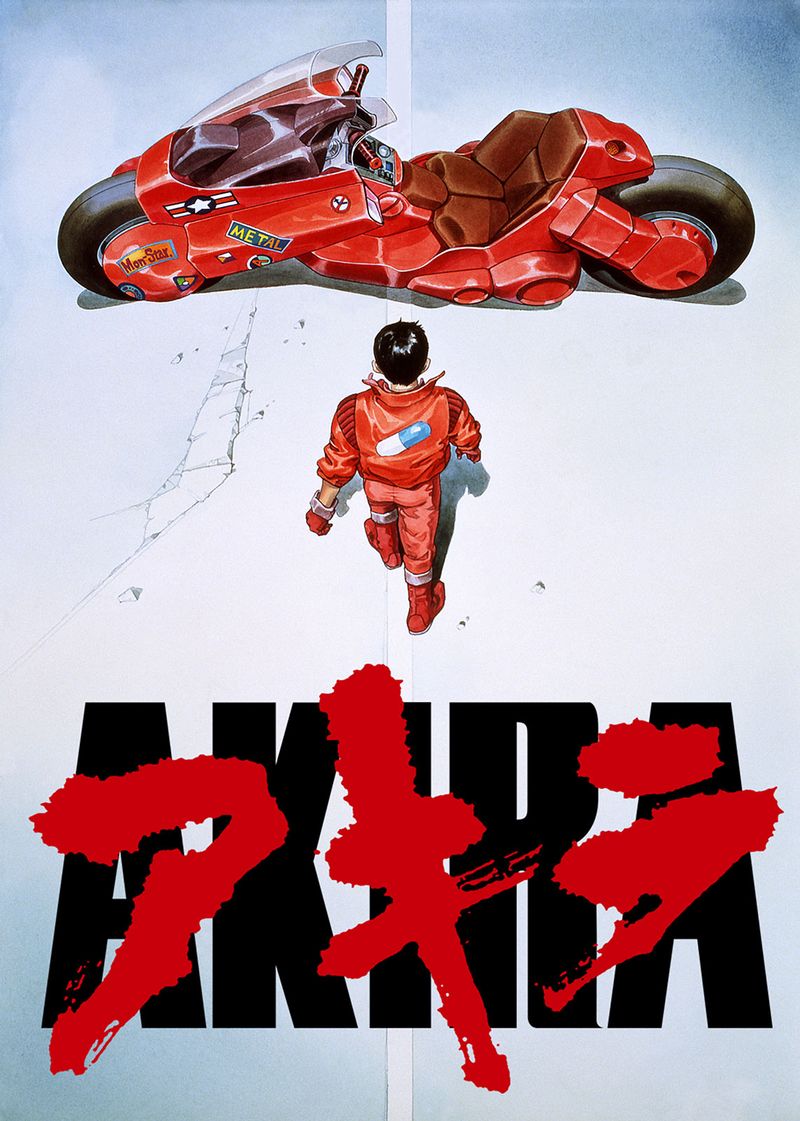The 1980s were a golden era for science fiction movies, sparking imaginations with visions of flying cars, robotic assistants, and dystopian worlds. These films painted a picture of the future that both fascinated and frightened viewers. Fast forward to today, and reality has proven to be a mix of both surprising advancements and disappointments. We explore 13 iconic movies from the 80s and how their portrayal of the future stacks up against the reality of today.
Back to the Future’s Flying Cars
In ‘Back to the Future Part II’, flying cars were as common as regular cars today. This iconic image of the future captured the public’s imagination, offering a world where traffic jams were a thing of the past. Yet, in today’s reality, while flying car prototypes exist, the technology is not yet mainstream.
The dream of personal airborne vehicles remains mostly grounded, limited by regulatory, logistical, and technological challenges. While we’ve seen great strides in drone technology, the leap to practical flying cars for everyday use is still a vision for the future.
The Terminator’s AI Domination
In the 1984 classic ‘The Terminator’, AI has taken over, with Skynet ruling the world with an iron fist. The fear of machines becoming self-aware and hostile has lingered since. Today, AI is indeed pervasive, but in more benign ways.
Technology like Siri and Alexa provides convenience and efficiency, not threats. The film’s depiction of AI as a malevolent force contrasts sharply with our current experience, where AI enhances rather than endangers daily life. However, ethical concerns about AI’s future impact remain a topic of intense discussion and debate.
Blade Runner’s Neon Metropolis
‘Blade Runner’ painted a vision of 2019 Los Angeles as a sprawling, neon-drenched metropolis, teeming with life and futuristic technology. The film’s aesthetic left a lasting impression, influencing countless sci-fi works.
However, the actual 2019 Los Angeles bore little resemblance to Ridley Scott’s vision. While modern cities have embraced neon and digital billboards, they lack the gritty, cyberpunk feel of ‘Blade Runner’. The film’s mixture of advanced technology and urban decay remains a compelling, albeit largely fictional, portrayal of the urban future.
Total Recall’s Mars Colonies
In ‘Total Recall’, humans live and work on Mars, exploring the red planet’s mysteries. This representation of space exploration ignited dreams of colonizing other worlds. Today, Mars colonization is still aspirational, led by agencies like NASA and companies such as SpaceX.
Though unmanned missions have provided invaluable data, and rovers traverse its surface, human settlement is still a future goal. The film’s depiction of a fully-functioning Martian society overshot our current achievements, highlighting both the ambition and the hurdles involved in interplanetary colonization.
Robocop’s Law Enforcement
‘Robocop’ envisioned a future where robotic law enforcement maintains order in crime-ridden cities. This concept of cyborg officers was both thrilling and terrifying, embodying the era’s fears and fascination with technology.
In reality, while robotics plays a role in modern policing, the idea of a RoboCop remains science fiction. Today, drones, surveillance systems, and AI assist in law enforcement, but the ethical and practical implications of fully robotic officers keep this vision firmly in the realm of fiction. The film remains a cautionary tale about technology’s role in society.
The Running Man’s Reality TV
‘The Running Man’ foresaw a future where reality TV becomes dangerously real, with contestants fighting for their lives on screen. This dark vision critiqued society’s appetite for sensational entertainment.
Today, while reality TV is widespread, it hasn’t reached the lethal extremes imagined by the film. Shows like ‘Survivor’ and ‘The Amazing Race’ emphasize competition but maintain safety and ethics. The film’s exaggeration serves as a reminder of the potential for media to exploit human behavior and the importance of maintaining ethical standards in entertainment.
Tron’s Digital World
‘Tron’ introduced audiences to a digitized universe inside a computer, where programs were personified and battles were fought on light cycles. This innovative visual concept fascinated viewers with its portrayal of a virtual world.
Today, while virtual reality technology has made significant strides, we’re still far from the fully immersive experience depicted in ‘Tron’. VR headsets and digital landscapes offer entertainment and education, but the seamless integration of the digital and physical worlds seen in the film remains largely aspirational. ‘Tron’ continues to inspire advancements in digital technology.
Escape from New York’s Chaos
In ‘Escape from New York’, Manhattan has been transformed into a massive prison, symbolizing society’s collapse and urban decay. This vision of the future was a reflection of the era’s fears about crime and urban disintegration.
However, today’s New York is a bustling hub of innovation and culture, far from the dystopian nightmare depicted in the film. While cities face challenges like homelessness and inequality, they also thrive with diversity and progress. The movie’s portrayal serves as a stark reminder of how far urban areas have come since the 1980s.
Short Circuit’s Friendly Robots
‘Short Circuit’ brought to life a charming robot named Johnny 5, who learns to think and feel. This film depicted a future where robots could become companions and friends. Today, home robots exist, but they’re mostly limited to tasks like cleaning.
The idea of robots with genuine emotions remains in the realm of fiction. While AI continues to evolve, creating machines with human-like empathy and understanding is a complex challenge. The film’s optimistic portrayal of friendly robots invites us to imagine the possibilities and ethical implications of such developments.
Mad Max’s Post-Apocalyptic Wasteland
‘Mad Max’ showcases a bleak future where society has collapsed, and survival hinges on resourcefulness in a harsh wasteland. This vision resonated with fears of environmental and societal breakdown.
While today’s world faces environmental challenges, the apocalyptic scenario of ‘Mad Max’ has not materialized. Efforts to combat climate change and promote sustainability are ongoing, but the desolate future remains fiction. The film’s haunting imagery serves as a warning and a call to action to address our planet’s pressing issues before they spiral into chaos.
WarGames’ Computer Hacking
In ‘WarGames’, a young hacker accidentally almost starts World War III through computer hacking, reflecting fears of technological vulnerabilities. This film highlighted the potential for technology to cause unintended consequences.
Today, cybersecurity is a crucial aspect of modern life, with governments and businesses working to protect sensitive information. The film’s portrayal of hacking has evolved with technology, but the core message about the importance of cybersecurity persists. It reminds us of the need to safeguard our digital infrastructure and the potential dangers posed by technological advancements.
Akira’s Urban Dystopia
‘Akira’ depicted a dystopian future Tokyo, blending cyberpunk aesthetics with societal unrest. Its intricate, neon-lit visuals captivated audiences and influenced future works.
While Tokyo has grown into a vibrant metropolis, it doesn’t resemble the chaotic city in ‘Akira’. Modern urban developments focus on sustainability and liveability rather than the dystopian elements seen in the film. ‘Akira’ remains a significant cultural touchstone, reminding us of the potential for urban growth and technological advancement to cause societal shifts, both positive and negative.
The Jetsons’ Futuristic Homes
‘The Jetsons’, though primarily a TV show, encapsulated 80s futurism with its depiction of space-age homes equipped with robotic servants and flying cars. This vision of domestic life was utopian and whimsical.
In reality, while smart home technology has advanced, we’re far from the fully automated homes portrayed. Devices like smart speakers and automated lighting offer convenience, but the seamless, gadget-filled lifestyle remains a dream. ‘The Jetsons’ continues to inspire innovations in home technology, inviting us to imagine the possibilities of future domestic living.
